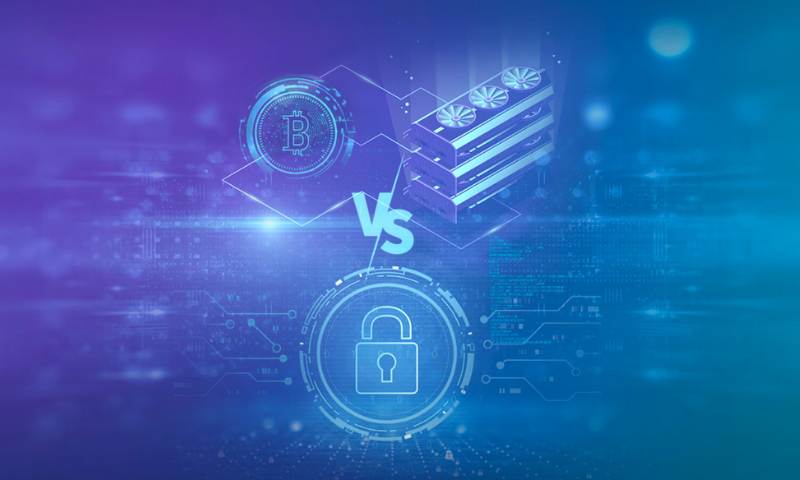Security of consensus mechanisms is the backbone of blockchain trust. It’s like a promise that can’t be broken. Imagine if that promise was unshakable. That’s what we aim for when we build a blockchain. We want it to be tough against any attack, always checking its facts, making sure no lie gets past. Think of this as your map to building that unshakeable trust. Let’s dig into how these mechanisms work and inspect every nook and cranny for possible weak spots. Our quest is clear: keep your blockchain solid, so everyone can bank on it without fear. Join me in making sure these digital promises stick.
Understanding the Foundations of Blockchain Security
Exploring Consensus Algorithms Vulnerabilities
Blockchain security starts with consensus algorithms. These rules keep all users honest. Without them, blockchains don’t work. They make sure everyone agrees on the data. But they can have weak spots.
One main concern is the risk of a 51% attack. This happens when someone controls more than half of the network. They can then change the blockchain as they wish. The key to stopping this is to have many users. More users mean more security.
Another issue is Sybil attacks. Here, one user pretends to be many. They aim to disrupt the network. We fight this by checking new users carefully. This keeps our blockchain healthy.
Other problems come from the blockchain’s own code. Sometimes there are hidden flaws. Hackers can exploit them. That’s why we always test the code. We also have other experts check our work.
Proof of Work (PoW) and Proof of Stake (PoS) are two main blockchain types. Both try to keep the blockchain secure and true. PoW makes solving puzzles hard. This uses lots of computer power. PoS makes users show they have a stake in the blockchain. They risk losing it if they act badly.
Each system has its pros and cons. PoW is tested and secure. But it uses too much power. PoS is newer and greener. But it’s not as tested as PoW. Critics worry it might not be as strong.
A blockchain’s strength also depends on its network. Good networks have many computers. They are spread out wide. This makes attacking the network hard. It takes too much work to hit every part.
Cryptography is the secret sauce of blockchain. It’s like a lock that only the right key can open. We need strong locks so no one can break in.
Smart contracts are like deals written in code. They need good security too. Bad code can mean broken deals. And this can hurt trust in the blockchain. That’s why we need to check everything. We need to be sure the security is tight.
Examining Proof of Work and Proof of Stake Mechanisms
PoW makes users solve math problems. This proves they worked hard. It costs them time and power. So, most won’t cheat. It’s just not worth it.
But PoW can be slow. And it uses a lot of energy. This is bad for our planet. That’s why some say PoS is better.
In PoS, users lock away coins as a promise. They promise to play fair. If they cheat, they lose their stake. This makes them think twice.
A big question is: which one is safer? Right now, PoW has a longer track record. But PoS is getting better fast. And it saves energy. This is good for our future.
We must keep an eye on both systems. Only this way can we find the best route. We’ll choose the path that keeps us all safe. And the one that makes the best sense for our planet.
Tackling Blockchain Attack Vectors and Preventative Measures
Strategies for 51% Attack Prevention
What is a 51% attack? It happens when someone controls more than half of the mining power. They can stop new transactions or reverse completed ones. This risks the trust in a blockchain.
To stop this, networks use methods that make it costly to get such power. For example, they check miners’ work with Proof of Work. Here, solving puzzles takes much time and energy. No cheat code exists for this kind of hard work.
Proof of Stake is different. It lets people the cup based on what they own. The more you have, the more you can mine. But it’s not all about money. You must also show you trust the system. Stake your coins, and if you break the rules, you lose them. That’s a strong reason to stay honest.
Both ways aim to keep our digital ledgers safe. They rely on the community to work right. Everyone watches to prevent bad acts from a few.
Ensuring the Integrity of Byzantine Fault Tolerance Systems
Byzantine Fault Tolerance (BFT) systems make sure a few bad players can’t harm the blockchain. They use a vote system. Even if some try to mess up, the others can keep it right. Like having more eyes on a team to spot a foul play.
These systems face their own risks, too. Someone could act like many voters. This is called a Sybil attack. How do we stop it? We check who’s entering. Basic tests can make sure only real users join. It keeps the voting fair and clean.
Trust is slow to build but quick to break. So, protecting these systems helps maintain belief in the blockchain. We’re all about stopping problems before they start.
In all this talk of defense, remember that standing together is key. Each user is like a guard, watching over the digital space we share. Together, we can tackle any threat that faces our blockchain. It’s teamwork at its finest.
The Importance of Robust Cryptographic Protocols and Node Security
The Role of Smart Contract Audits in Preventing Exploits
Smart contracts are like vending machines. You pick an item; the machine checks if you have enough money. If you do, you get your soda or snack. If not, you get nothing. Smart contracts work a lot like that, but they deal with digital money or “tokens” on the blockchain. They follow rules set out when they are created. If someone tries to do something the rules don’t allow, the contract says “Nope, not going to happen.”
But like all software, smart contracts can have bugs or hidden doors where bad people try to sneak in and steal tokens. This is why smart contracts must go through something called an “audit.” Think of it like your mom checking your homework. She makes sure every answer is right. In smart contract audits, experts look for mistakes or ways someone might try to cheat. They make sure the contract will only let the right things happen.
This step is a big deal because the blockchain remembers everything forever. If someone finds a way to cheat, they might steal a lot of tokens and that’s bad news for everyone. To keep this trust, audits are not a one-time thing. They happen regularly to catch any new ways someone could break in.
Mitigating the Risks of Delegated Consensus Models
Now, let’s talk about how groups of people all agree on what’s true on the blockchain. This is called “consensus.” There are a few ways to do this, and one of them is called “delegated consensus.” Instead of everyone shouting “Yes, that’s right!” or “No, that’s wrong!” a few chosen ones get to decide. This can make things faster and save a lot of power.
But, there’s a catch. What if the chosen ones are sneaky and try to cheat? To stop this, there’s a rule – if they cheat, they lose their place in the group and might also lose tokens. This keeps them honest because cheating is not worth it.
Still, we have to keep an eye on these chosen ones, called “validators.” Regular checks make sure they play by the rules. Think of this like having a hall monitor at school. They watch the halls and make sure no one breaks the rules. Validators who take their job seriously help keep everyone’s tokens safe.
Every part of the blockchain has to be tough, like a chain with strong links. The smart contracts have to be checked and re-checked. The people who run the network – those validators – have to be watched. When everyone does their part, the blockchain stays safe and we can all trust it.
The Future of Blockchain Security and Innovations
Advancements in Zero-Knowledge Proofs and Their Impact on Privacy
Zero-knowledge proofs let you share secrets without giving all the details. Think of it like telling a friend you have a surprise for their birthday, but not what it is. This keeps your surprise safe while making your friend excited. In blockchains, these proofs keep your info safe. Even when you do transactions, no one can see the details. They just know you followed the rules.
This tech is growing fast. It’s making blockchains more private and trustworthy. As more folks worry about who can see their data, zero-knowledge proofs are a big deal. They make sure you can do your thing without anyone snooping around.
The Evolution of Consensus: From Nakamoto to Novel Protocols
Now, let’s talk big changes in consensus mechanisms, the ways blockchains agree on things. First came Nakamoto consensus, the brain behind Bitcoin. It uses mining, where computers solve puzzles to keep the network safe. But mining takes tons of power.
Some folks said, “Let’s find a better way!” They made Proof of Stake. Instead of solving puzzles, you just show you have some coins. This uses way less power. But, there’s a catch. If you own lots of coins, you have more say. That could be risky, as big players might get too strong.
New consensus ideas keep popping up. They try to fix these issues. They want to save energy and keep it fair. Some use voting or random choice. Others mix different ideas together. These new protocols have to stand the test of time. We need to be sure they’re strong and fair for everyone.
There are challenges, no doubt about it. But smart folks are working on these every day. They’re finding solutions and making blockchain better and safer. This is a wild ride, but it’s taking us to a future where blockchains are not only smarter and faster but also greener and more equal. And in this future, we can trust that our digital worlds stand on solid ground, secure from the sneaky tricks and sticky fingers of the online wild west.
In this post, we’ve looked at blockchain’s core security. We saw how consensus algorithms can have weak spots. We learned about Proof of Work and Proof of Stake, too. We discussed stopping 51% attacks and protecting Byzantine Fault Tolerance systems. Smart contract audits and the issues with delegated consensus were also key points.
On top of that, we explored how cryptography and node security keep blockchains safe. We saw the future of blockchain security, like zero-knowledge proofs boosting privacy. We learned about new consensus protocols moving beyond Nakamoto’s design.
My final thought? Keeping blockchains safe is tough but doable. The tech keeps getting better. We must stay sharp and adapt to new changes. This way, we keep our digital blocks tough as steel.
Q&A :
What are consensus mechanisms and why are they important for security?
Consensus mechanisms are crucial protocols used in blockchain technologies to achieve agreement on a single data value among distributed processes or systems. They play a significant role in maintaining the security and integrity of the distributed ledger, as they ensure that each transaction is verified and agreed upon by all nodes within the network before it is recorded. This prevents fraudulent transactions and double-spending, thereby bolstering the overall security of the blockchain network.
How do consensus mechanisms enhance the security of blockchain networks?
Consensus mechanisms enhance the security of blockchain networks by requiring the validation and agreement of the network participants, or nodes, on any changes to the ledger. Mechanisms such as Proof of Work (PoW) and Proof of Stake (PoS) utilize computational work and staking of assets, respectively, to deter malicious activities by making attacks costly and unprofitable. By ensuring that only valid transactions are added to the blockchain, consensus mechanisms uphold the network’s security and resilience against various types of attacks.
What are the most common types of consensus mechanisms?
The most common consensus mechanisms used in blockchain technology are Proof of Work (PoW), which requires solving complex cryptographic puzzles; Proof of Stake (PoS), which involves validators being selected to create new blocks based on the number of coins they hold and are willing to “stake” as collateral; and Delegated Proof of Stake (DPoS), where stakeholders vote for a limited number of delegates to secure the network. Other examples include Proof of Authority (PoA), Proof of Space (PoSpace), and Byzantine Fault Tolerance (BFT) mechanisms.
Can consensus mechanisms fail, and what are the implications for security?
Consensus mechanisms can theoretically fail if a single entity gains control over a significant portion of the network’s validation power, known as a 51% attack in Proof of Work systems, or a similar majority in other mechanisms. This would allow the entity to manipulate the ledger, potentially reversing transactions or double-spending coins. Such an event can compromise the security and trustworthiness of the network, and measures like diversifying the pool of validators and increasing transparency in the consensus process are important for preventing such failures.
How is the security of consensus mechanisms likely to evolve in the future?
The security of consensus mechanisms is likely to evolve through the development of more energy-efficient algorithms, the enhancement of decentralization to prevent control concentration, and the integration of additional cryptographic methods to strengthen resilience against attacks. Innovations in sharding, layer-two protocols, and cross-chain interoperability can further bolster the security and scalability of consensus mechanisms, ensuring they can support a wider adoption of blockchain technology in various applications.


